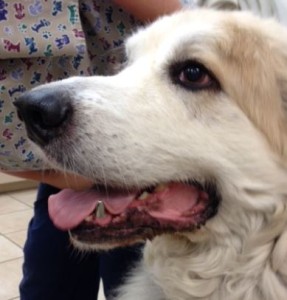When a dog or a cat loses a tooth, the space can be filled with a dental implant. Veterinary dentists are replacing missing teeth with implants just like human dentists do for people. For working dogs that use their mouths to apprehend suspects, retrieve prey or pick up keys for people with disabilities, dental implants allow them to continue their work. Dental implants have been placed in wild animals allowing them to catch prey and return to their natural environment.

But dental implants are not for every dog or cat. Successful implants require strong bone to hold the implant. Most of the dogs and cats I see lose teeth due to periodontal disease. Bacteria release enzymes that work over time to destroy the structures that hold teeth in place. Periodontal disease is classified into four stages based on the amount of support loss. More information may be found at my post, “Periodontal Disease in Dogs and Cats”. If the bacteria are not removed from around the implant, it will suffer the same fate as the tooth it replaced.
Before placing implants in a dog or cat’s mouth, I recommend an honest evaluation of home care. Will daily brushing be possible with the family’s routine? Will the dog or cat allow it? If the answer to either of these questions is no, then a simple extraction would be better for the pet. Remember, implants can become infected leading to pain just like happens to some teeth.
Source:
Tannenbaum, J. et al, “The case against the use of dental implants in dogs and cats.” J. Am Vet Med Assoc. December 15, 2013;243(12):1680-5.